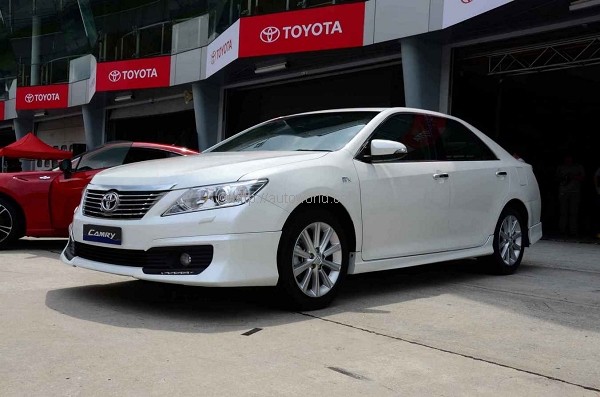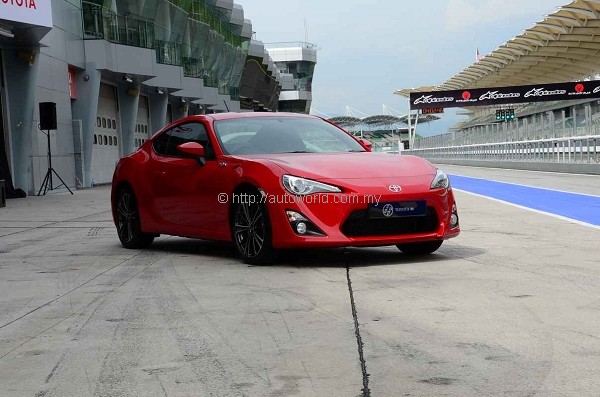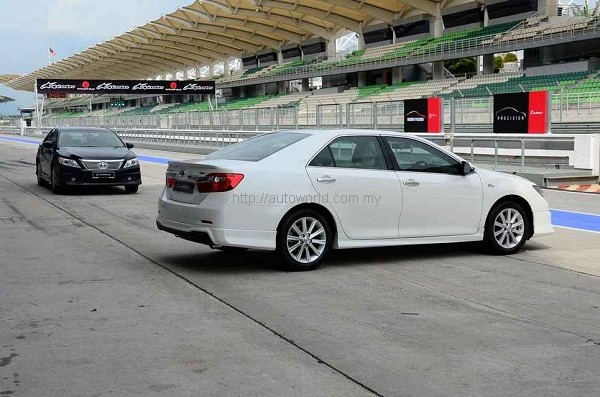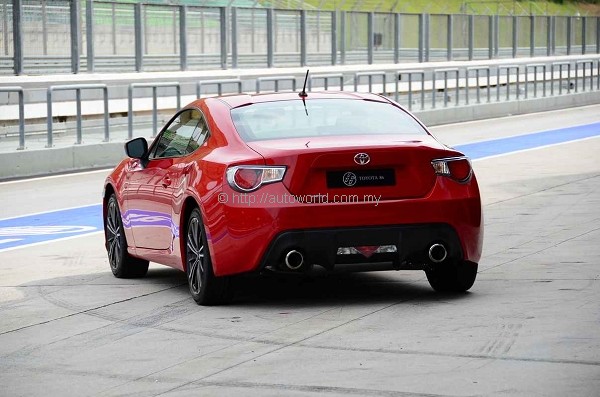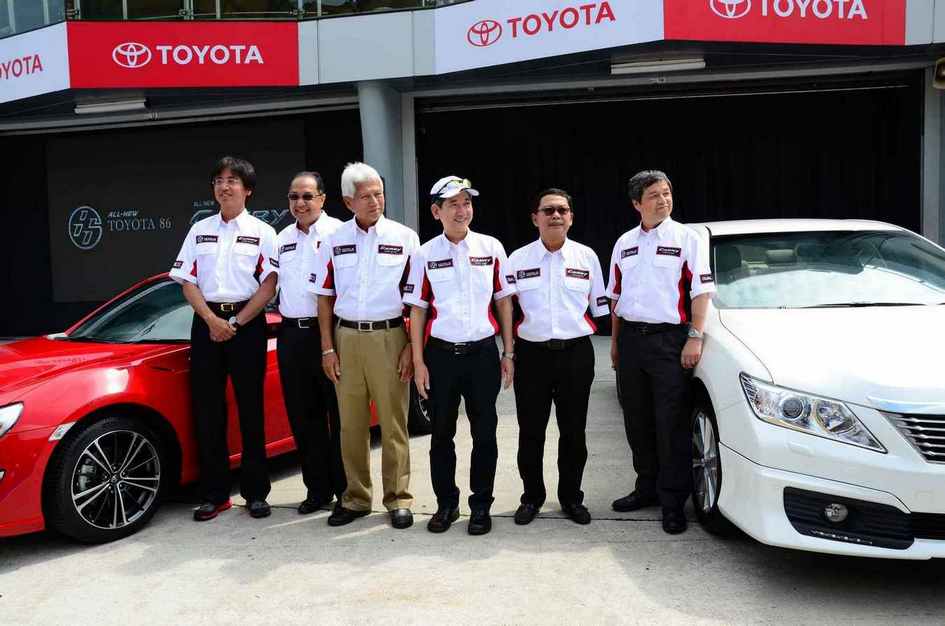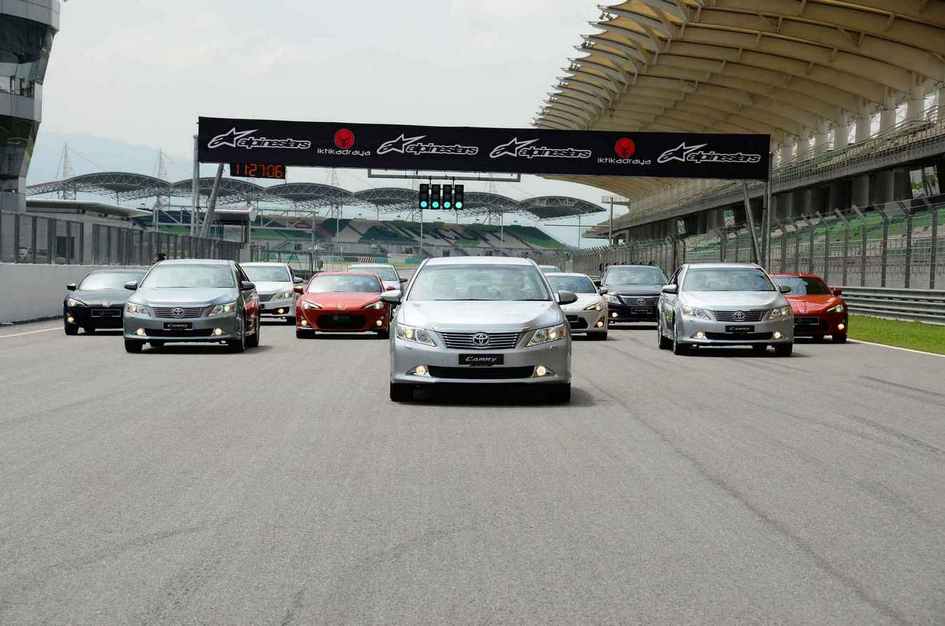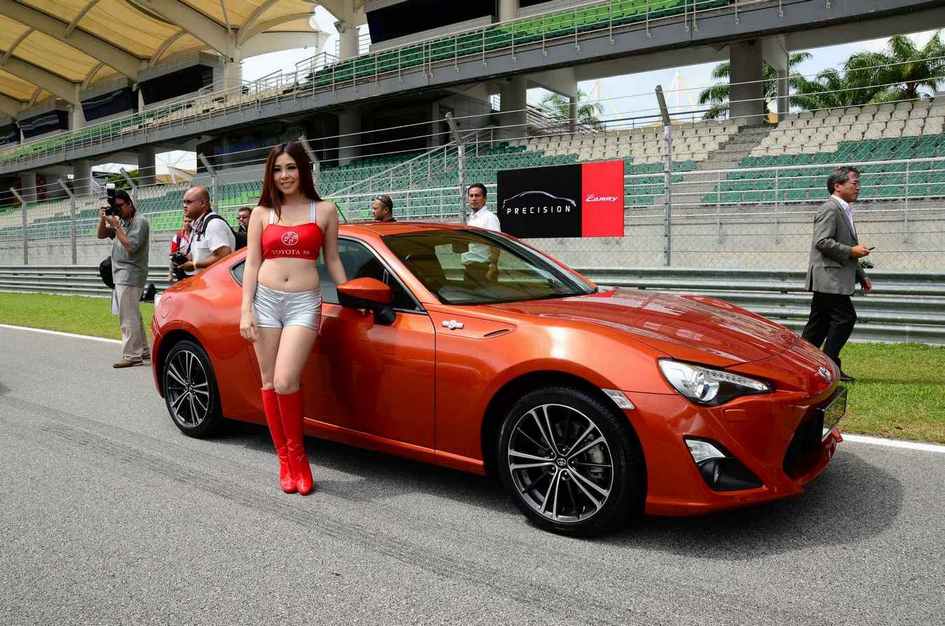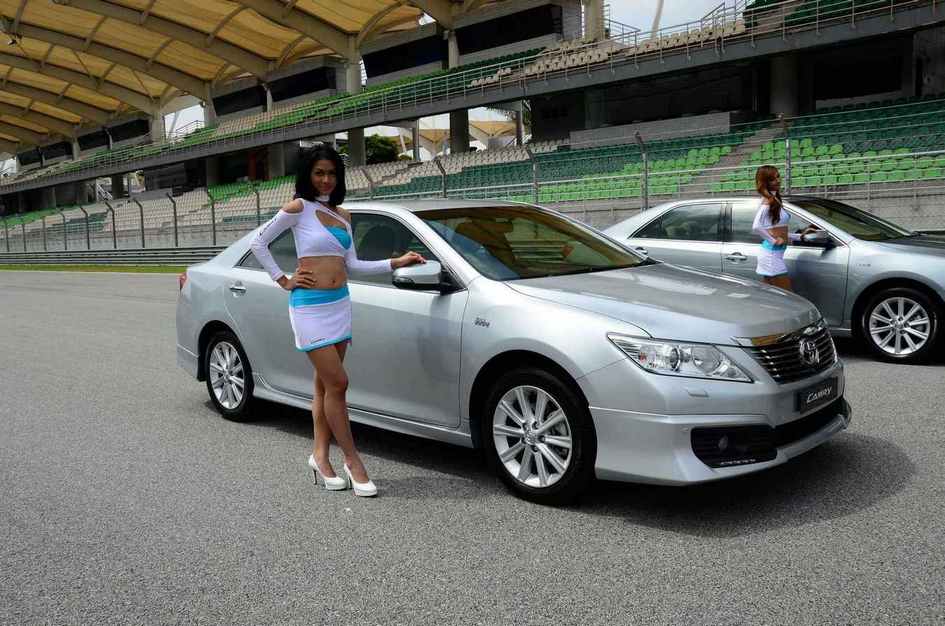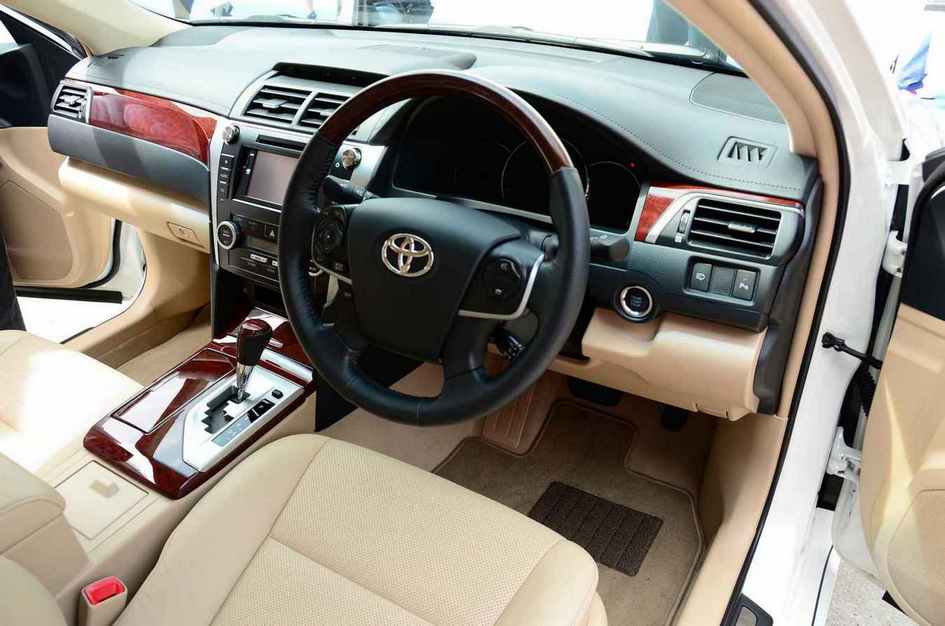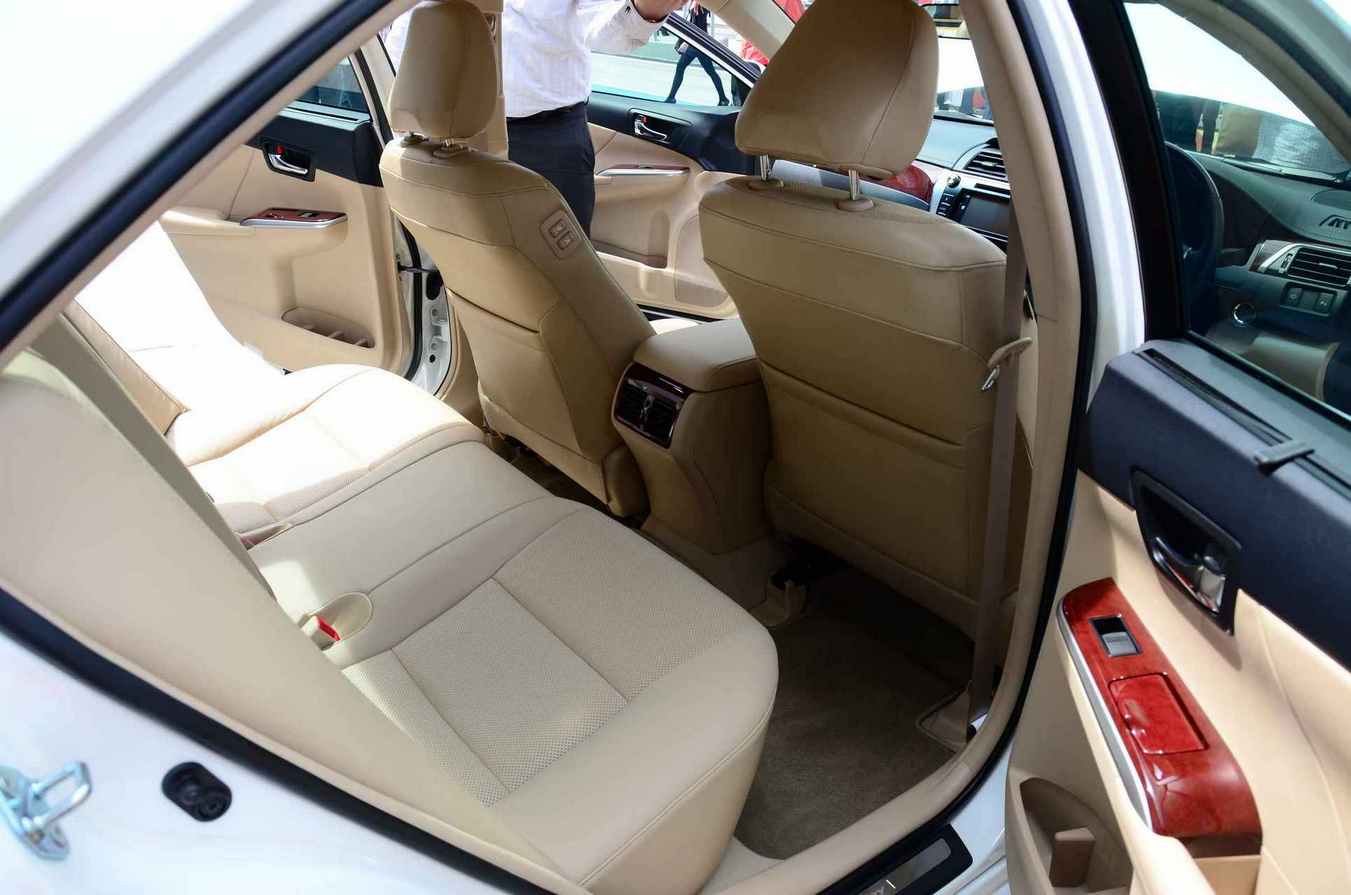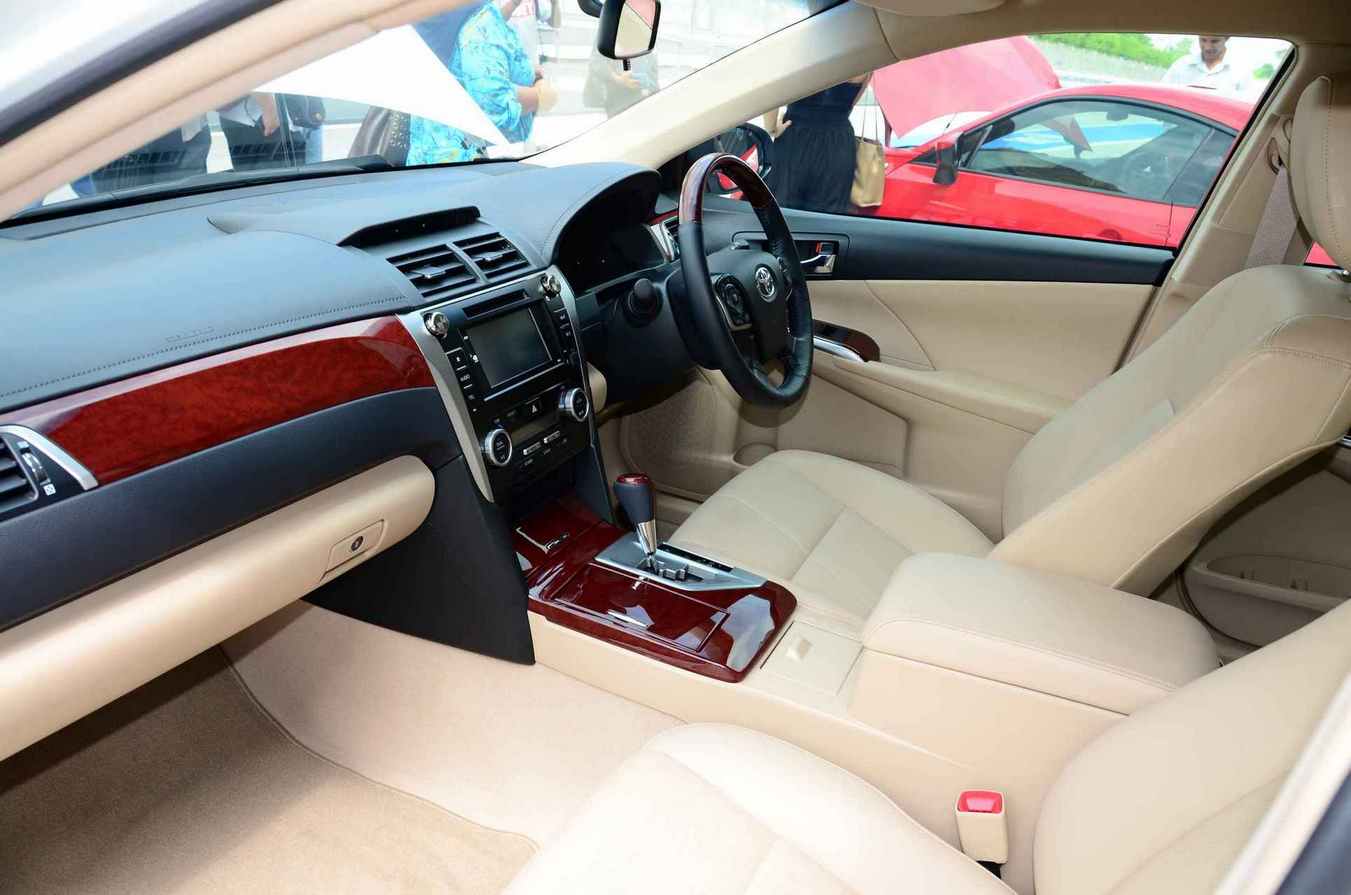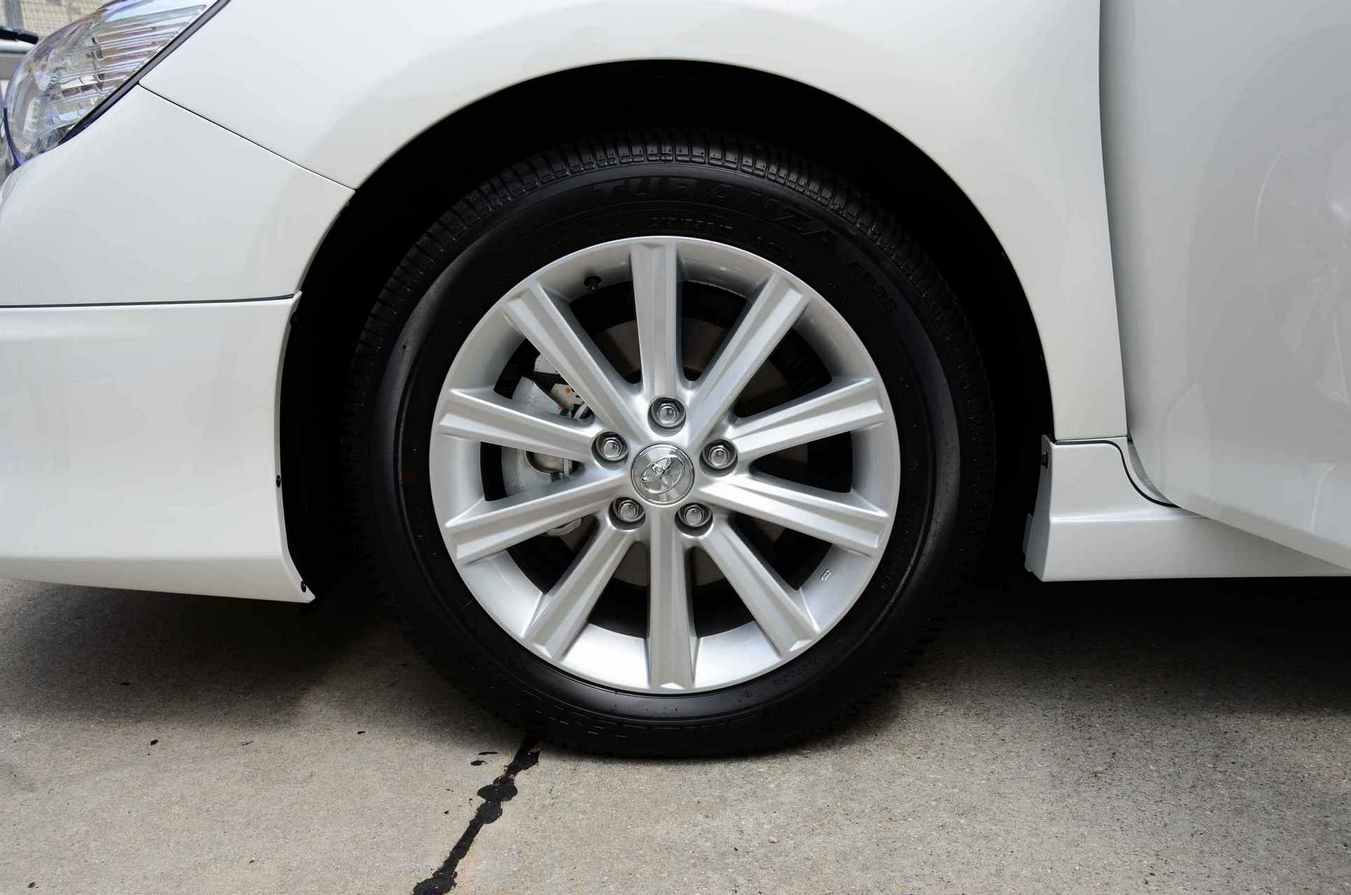Toyota Launches All New Camry and Toyota 86
Sepang, 01 June 2012 – UMW Toyota Motor Sdn Bhd launched not one, but two all-new models, the Toyota Camry, and the long awaited Toyota 86 with a flourish at the Sepang International Circuit today. The launch, attended by around 140 members of the Malaysian media was highlighted by a brilliant driving tableau, followed by taxi rides in the new Camry for the mainstream media, after which the motoring media were given a chance to have a feel of the Camry on the north track of the Sepang Circuit.
The new Camry comes in three variants – the range includes a base model with a 4-cylinder 2.0 litre engine (2.0E), followed by an up-scale model with the same 2.0 litre engine, the 2.0G. Both the 2.0E and 2.0G are equipped with the same engine and 4-speed automatic transmission from the current 2.0 litre Camry. The top of the range model (2.5V) comes with a newly-introduced 2.5 litre 4-cylinder engine. All three engines feature VVT-i.
The new Camry is about the same size as the outgoing model – which is just about the best size one could expect from an executive sedan in this category. Although it looks much the same as the outgoing model, there have been numerous improvements both on the exterior and interior. The exterior looks have been refined to give a more majestic appearance – whilst retaining a simple but bold form. An elevated bonnet line and a large front grille contribute to a more majestic demeanour, whilst a new bumper design with an integrated air dam, side skirts and rear skirts give it a sporty character. The overall effect is a sedan that looks just as good, if not better than the outgoing model. Personally, I think the design engineers must have had a tough time trying to design a car that could look better than the outgoing model, which is leading the market in this segment – but they seem to have succeeded. The new shape is definitely an improvement over the outgoing shape, and what I like about it is that it still exudes that ‘executive’ air, and does not have any unnecessary frills that may not stand the test of time.
Although exterior dimensions are about the same as the outgoing model, the designers have managed to improve interior space – there is more headroom and leg-room at the rear; we had the rare opportunity to compare both cars side by side, including a drive in both the new and outgoing models (2.4 litre versus the new 2.5 litre) and I found that the new car actually is more fun to drive, and handles better than the outgoing model. The additional capacity provides an improvement in response to throttle, and the six-speed automatic transmission makes acceleration more brisk, while gear changes are smoother.
The new 2.5 litre engine offers 10 percent more power, and is claimed to be 24 percent more fuel efficient. This is helped along by the adoption of EPS (Electric Power Steering) which lightens the overall load on the engine – and during the test drive, it felt in every way as good as a conventional mechanical power steering. Refinements to the body design keep the Camry quiet, and the overall stability is excellent – the result is, at least where the 2.5 litre model is concerned, a much better driving performance. Contribution to fuel efficiency also comes from improved aerodynamic efficiency which includes not only the use of stabilizing fins to smoothen air flow along the sides of the body, but also along the undersides of the body.
The new Camry comes with HID projector headlights which not only increase night driving safety, but consume less energy as well. Tail lights are LEDs. For the fuel-economy-minded, a thoughtful feature is the additional fuel economy gauges in the meter panel that provide instantaneous and average fuel consumption figures, plus an ‘ECO’ indicator light that appears when the engine is running efficiently.
On the whole, the All-new Camry looks set to continue being one of the top sellers in its segment, and is a worthy successor of the outgoing model.
The All-New Toyota 86, launched together with the Camry, goes into a territory that has hardly been trodden before by UMW Toyota Motor. For the first time in a long time, UMW Toyota is venturing into the sales of a sports car, and I suppose the Toyota 86 is just about the best car to begin with. Named after the cult-status AE86, but more inspired by the Toyota Sports 800 and the Toyota 2000 GT (both of which are highly sought after collectors’ items today), the Toyota 86 is a promise of altruistic fun for driving enthusiasts.
Some of us ‘privileged’ media had a go with the car on the race track a day before the launch, and personally, I cannot see any reason for this model to not melt the heart of any driving enthusiast, except, perhaps for the fact that it will cost RM243k for the manual and RM249k for the automatic. However, if you want to have one, I would suggest that you quickly go over to the nearest Toyota outlet to book one, as there are only 140 units available in Malaysia for this year, and 30 have already been sold prior to launch.
The Toyota 86 designers, from the very start wanted a car that would be relatively simple and affordable, with plenty of room for customization, but at the same time they wanted to build a car that would be fun to drive. If you are looking for a muscle car with a monster engine and heart-stopping acceleration, then the 86 is not for you. However, if you want to have a car that you can be as one with, then you have to drive the 86. We had the chance to meet the Chief engineer who is responsible for the Toyota 86, and I could see from the glint in his eyes whenever he talked about the Toyota 86 that this here was a man who loves cars and driving.
In the 1980’s, the original AE86 was my rally partner for three rally seasons – it also gave me three rally championship wins, plus countless wins in individual rally events. That was a great car – it was not the most powerful, but what it lacked in grunt, it made up for in agility – it is a car that becomes an extension of your self – and the new Toyota 86 is that kind of car.
The overall shape is more of the Toyota 2000GT, and you might be forgiven if you mistook it for a Celica Supra, but the essence of the Toyota 86 is the AE86. Power is from a horizontally opposed flat four 2.0 litre naturally-aspirated Boxer engine from the newly-acquired Subaru brand. With 200 horses under the hood, it is not the fastest car off the block, but it sure handles like a dream. Very forgiving, and very predictable, the Toyota 86 is like putty in the hands of a good driver. In the hands of a driver who wants to learn how to drive, it will be an excellent tool due to its very forgiving nature. For the uninitiated, the Toyota 86 comes with driving aids and safety features like Traction Control and ABS; these can be circumvented by using ‘Sports’ mode, which partially disables some of the features, or you can fully disable all driving aids by turning them all off.
The front-engine rear-drive configuration is in the tradition of what a ‘true blue’ sports car should be; and when you drive the Toyota 86, you will appreciate the amount of detail that went into overall weight, weight distribution, and driving dynamics – commitments that began from the moment the design was just a piece of blank paper.
The overall result is a driving experience that is second to none, despite its apparent horsepower disadvantage. We were told that in a very recent European race, the Toyota 86 was top of its class despite running a stock engine.
My initial driving impressions are that this is a car that has excellent driving dynamics, very predictable handling, and is extremely easy to drive. It is a car that you will buy and keep for posterity, and it just got into my wish list of cars to have.




